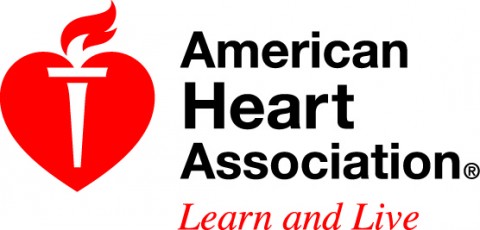According to a new survey, people more likely to witness a stroke might not know how to identify one; free app helps people Spot a Stroke F.A.S.T.
 Nashville, TN – Crystal Wall was having a typical chat on the phone with her sister Chassity Anderson — until her sister’s phone abruptly crashed to the floor and her words suddenly became slurred.
Nashville, TN – Crystal Wall was having a typical chat on the phone with her sister Chassity Anderson — until her sister’s phone abruptly crashed to the floor and her words suddenly became slurred.
Anderson, 37, was having another stroke.
“Because my sister had suffered from stroke before, I recognized the warning signs and knew to call 9-1-1,” Wall said. “I know stroke is something that can happen to anyone at any time and if it does, you have to act quickly. The longer you wait, the worse it can be.”
Sarah Urmeneta of Mt. Juliet was working a retail job at age 24 when her arm went numb and her vision suddenly changed. Her mom, a nurse, recognized the signs of a TIA – a transient ischemic attack, or warning stroke, and convinced Sarah to seek help.“I didn’t know until I started working with the American Heart Association how serious this was, and that I should have called 9-1-1 immediately,” said Sarah.
Sandra Miller-Roberson of Murfreesboro was working out at the gym when she was struck with severe pain in her head.
“I thought if I could just take a nap, I’d feel better. But a paramedic nearby convinced me to go to the ER. I lay down on the floor there, and that’s the last thing I remembered for three weeks,” said Sandra. Her “headache” was a burst brain aneurysm – a hemorrhagic stroke.
One in six people worldwide will have a stroke in their lifetime. In the United States, someone has a stroke every 40 seconds and it’s the fourth-leading cause of death. In Tennessee, about 3200 people die of stroke each year.
In recognition of World Stroke Day on October 29th, the American Heart Association/American Stroke Association urges those who care for others to learn the stroke warning signs, since bystanders often need to act fast in an emergency.
A new survey commissioned by the American Heart Association/American Stroke Association found that many people who care for family or friends at high risk for stroke don’t know the potentially life-saving warning signs.
- Only 41 percent of people who care for individuals with health concerns other than stroke know three or more stroke warning signs as compared to 58 percent of those who care for stroke survivors.
- Knowledge of three or more stroke warning signs was slightly better (46 percent) among people who care for individuals with high blood pressure, a major risk factor for stroke.
- Virtually all surveyed said they would call 9-1-1 if they thought someone was having a stroke, but a recent study showed more than a third of stroke patients don’t get to the hospital by ambulance.
“The patient doesn’t always recognize their own stroke and when they do, sometimes their symptoms make calling for help difficult, if not impossible,” said Demetrius Lopes, M.D., surgical director of RUSH University Stroke Center in Chicago and American Heart Association/American Stroke Association spokesperson. “Just like we need to learn CPR to save someone else’s life, we need to learn how to spot a stroke and act fast for the best chance of a positive outcome.”
The American Stroke Association’s Together to End Stroke initiative, nationally sponsored by Covidien, a global healthcare product company, teaches the acronym F.A.S.T. to remember stroke warning signs:
F – Face Drooping: Does one side of the face droop or is it numb? Ask the person to smile.
A – Arm Weakness: Is one arm weak or numb? Ask the person to raise both arms. Does one arm drift downward?
S – Speech Difficulty: Is speech slurred, are they unable to speak, or are they hard to understand? Ask the person to repeat a simple sentence like, “The sky is blue.” Is the sentence repeated correctly?
T – Time to call 9-1-1: If the person shows any of these symptoms, even if the symptoms go away, call 9-1-1 and get them to the hospital immediately.
“Those with loved ones who have stroke risk factors should make it a priority to learn F.A.S.T. and teach others,” said Lopes. “Recognizing a stroke and calling 9-1-1 gives the patient a greater chance of getting to an appropriate hospital quickly and being assessed for life-saving treatment like a clot-busting drug or medical device.”
The association offers a free mobile app called Spot a Stroke F.A.S.T. to help people know the signs of stroke and identify award-winning hospitals nearby.
This year, 795,000 people in the United States will have a first or recurrent stroke. Other than a prior stroke, major stroke risk factors include:
- High blood pressure – It’s the most important controllable risk factor for stroke. About 77 percent of people who have a first stroke have blood pressure higher than 140/90 mm Hg. An estimated 78 million Americans have hypertension and it is especially serious in the African-American and Hispanic populations.
- Transient ischemic attack – About 15 percent of strokes are preceded by a TIA (or “mini stroke”).
- Atrial fibrillation (Afib) – It increases stroke risk up to five times and affects more than 2.7 million Americans.
- Smoking – Current smokers have two to four times the stroke risk of nonsmokers or those who quit more than 10 years ago. In 2011, 21.3 percent of men and 16.7 percent of women 18 or older were cigarette smokers.
For more information about the stroke warning signs and mobile app, risk factors or Together to End Stroke, visit www.StrokeAssociation.org.


